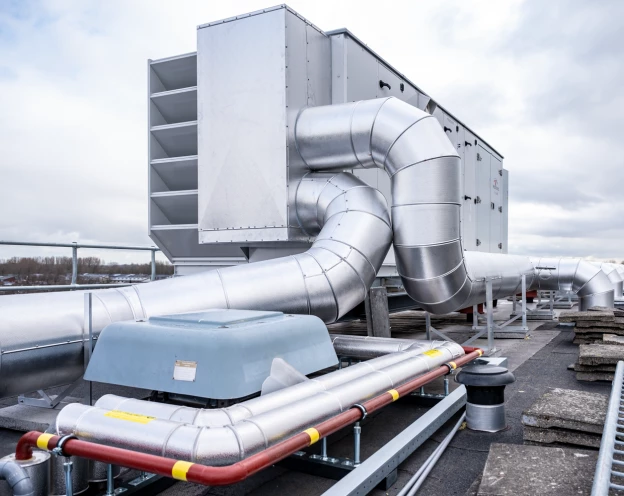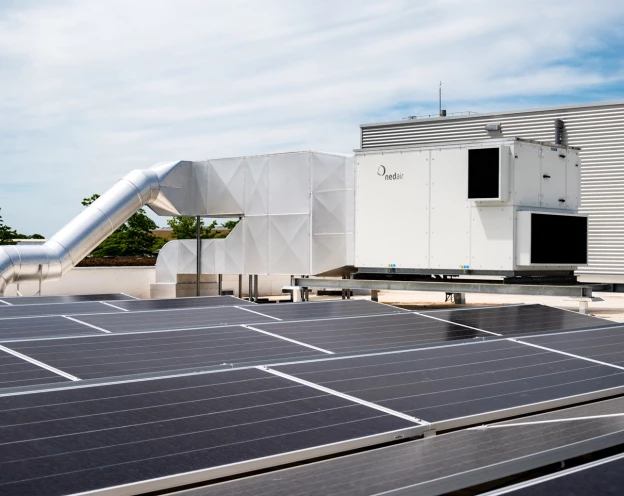
Forty years of Interduct: a trip down memory lane
How it all started
Any company celebrating its 40th anniversary has a rich story to tell. Ours begins in 1984 with the launch of Bemar, but even that event did not come out of thin air. Founders Jan Adams and Ben LeLarge both worked at building services company Bemelmans-Jongen in the late 1970s. Jan as a manager and Ben as project manager.
At that time, mechanical ventilation was a relatively new development in residential construction. Bemelmans-Jongen was extremely busy with it, especially in the Randstad region. The moment the management announced that it wanted to focus on the south-east of the Netherlands, Jan and Ben jumped in to fill the gap: their plan was to install ventilation systems for major contractors and building services companies in the housing sector. Named after a combination of Betty and Marlies, the first names of their beloved wives.
The new company gained the support of existing customers and suppliers. They immediately saw Bemar as a major player and offered purchasing terms to match. An indication of its flying start: the company overdrew a 50,000-guilder loan from with the AMRO bank. That was for a single day only; after that the company's figures stayed in the black.
British adventure and setting up Interduct
Bemar was already growing rapidly when the UK-listed company Expamet Int. PLC set out on an acquisition round in the late 1980s. They set their sights on companies working on something to do with air within a 400 km radius of Paris. After several attempts by the British, Bemar joined them in 1990 and was introduced to a way of doing business that did not really sit well them: the British company was very focussed on cash flow. Bemar has a different approach, and always pays its suppliers promptly.
The British adventure did not last long. A number of other Dutch companies were trying to punch above their weight and were all underperforming, with the exception of Bemar. The British referred to it as "The Holland Disaster". Good enough reason for Expamet to put a whole slew of companies up for sale, including Bemar. Jan and Ben had first right of refusal, provided they took over all 16 companies. That was not an option, so Bemar was taken over by another party. Jan and Ben remained as employees.
At least until 1992. That year, they bought back the shares and also became owners of Meercox in Eindhoven, a company focusing on air technology in commercial construction. With two companies, it was necessary to set up a holding company: the Interduct Group. The name Interduct (from the English word duct) was coined by Rens Harmeijer, managing director of Meercox, who became the co-owner.
Ittervoort as home base and expansion
In 1995, Interduct chose Ittervoort as its new home base, with two new buildings at Afrikastraat 18 and 20. Both Meercox and Bemar moved there. Also included was the manufacturing department of Luchttechniek Loosdrecht (LTL), which was acquired a year earlier.
From here, Interduct's expansion continued. In 1998, a second air technology building services company was established: Megaduct. It was based in Loosdrecht, so we could also provide services in the central Netherlands. We then identified a demand for ventilation spare parts and the maintenance of ventilation systems. Two more companies were set up to address this a year later: VentTrade International and ComfortServices. Partly because of the growth, the management team was expanded to include Wim Dams. Then, in 2000, manufacturing company IBB was acquired and a third building was added on Afrikastraat (number 22). Not much later, a third building services company was founded in the north-east of the country: VentKlima.
Besides the growth of the company, the first decade after 2000 were also marked by changes in top management. Veterans Ben LeLarge and Rens Harmeijer left. Frank Huis now appeared as a representative of Rabobank Participations, which had already held a stake in Interduct for several years. He became a co-owner in 2008. Wim Dams left in 2010.

A dark period
And then the crisis sets in. Brema Air went bankrupt and was taken over by Interduct. What followed was a merger of their factories, which jointly continued under the name Brema Air. On the one hand in order to work (even) more efficiently, but also because the machines at Brema Air, Meercox and Interduct Products (formerly IBB) were increasingly lying idle. Unfortunately, this collaboration was short-lived, as another bankruptcy followed a court ruling. A difficult, but necessary decision.
Since special work and customisation were still in high demand, Interduct bought back Brema Air's machines and restarted production. The new production company was (once again) called Interduct Products. We also relaunched a building services company, PRO61, from the former Brema Air. This name refers to Chapter 61 of the building regulations, which covers ventilation and air treatment systems. With these two new companies, Interduct was turning round into further growth.
Single source approach
Founder Jan Adams retired in 2018, although he is still involved with Interduct to this day. His departure brought in new director-shareholders Joyce Philips and Ivo Hanssen. Together with Frank, they are committed to the continued development of Interduct. This to be done partly through acquisitions. In the years that follow, Robé, Rodrie, Tops, WTW-filtersOnline, Home Air Solutions, CSE Elektrotechniek and BJ-Lupron, among others, joined the group. The management team was also expanded. This time by the twin brothers and former shareholders of Tops: Ruud and Tim Coppens.
Interduct was also setting up new companies of its own: the web shop Intovent to sell products and services to consumers and ComfortServices Renovation split off on its own under the name RenovAir due to tremendous growth.
New premises and further growth
All this expansion - by 2023 the Interduct Group consisted of 16 companies - meant we outgrew our space in Ittervoort. That is why opened up a second building at Platinastraat 34 in Nederweert, and went into partnership with IceLake Capital. Working with this partner, we are continuing to work towards providing a sustainable, healthy and comfortable indoor climate for everyone, while maintaining our autonomy.
































